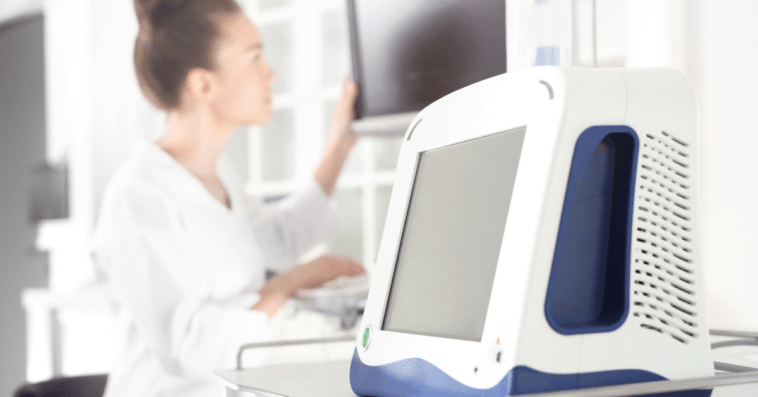Varicose veins affect many people, but for healthcare workers, the risk is significantly higher. This is due to the nature of their job and irregular schedules. Addressing varicose veins is crucial for healthcare workers to maintain their health and continue providing excellent care to their patients. This article explores the causes of varicose veins and what healthcare professionals can do to prevent and manage them.
What are Varicose Veins?
Varicose veins are visible, swollen veins that are just under the surface of the skin. They are commonly found in the legs. These veins develop when the valves in the veins that help regulate blood flow don’t work, causing veins to enlarge.
What are the Symptoms of Varicose Veins?
The symptoms of varicose veins go beyond their visible appearance. Common signs include:
– Aching or heavy legs
– Burning or throbbing in the lower legs
– Muscle cramping
– Swelling
– Skin discoloration around the affected veins
These symptoms can worsen after long periods of standing or sitting. Get a vein treatment to help manage these symptoms.
What Causes of Varicose Veins?
Many different factors contribute to the development of varicose veins. These include:
– Genetics
– Age
– Obesity
– Prolonged periods of standing or sitting
For healthcare workers, the constant strain on their legs from standing and moving patients can exacerbate the risk.
Why Healthcare Workers Are at Risk
Healthcare workers are some of the most dedicated professionals, often going above and beyond to ensure their patients’ well-being. However, the demands of their job put them at higher risk of having varicose veins. Let’s dive into the main reasons why.
Prolonged Standing
Standing for long periods is a daily reality for many healthcare workers. Whether you’re a nurse on a 12-hour shift or a doctor performing lengthy surgeries, standing for hours puts a lot of pressure on the veins in your legs. This makes it harder for blood to flow back to your heart and increases the risk of varicose veins.
Heavy Lifting
Lifting patients and heavy equipment is another routine task for healthcare workers. This physical strain can put additional pressure on your veins, which leads to varicose veins. Each time you lift something heavy, your veins have to work harder to circulate blood. It can cause them to become enlarged and twisted.
Irregular Schedules
Healthcare work often involves irregular schedules, including night shifts and long hours. These unpredictable hours can disrupt your body’s natural rhythm and circulation. Poor circulation makes it easier for blood to pool in your veins, contributing to the development of varicose veins.
Preventive Measures for Healthcare Workers
Healthcare workers are not excluded from getting varicose veins. But there are different measures you can take to deal with this condition.
Regular Exercise
Staying active is one of the best ways to prevent varicose veins. Regular exercise helps improve circulation, strengthening the muscles that support the veins. Simple activities can make a significant difference:
– Walking
– Swimming
– Cycling
Compression Stockings
Wearing compression stockings is an excellent way to support your veins and prevent varicose veins, especially for healthcare professionals who spend a lot of time on their feet. Wearing compression stockings helps prevent varicose veins by improving leg blood flow. These stockings apply pressure, helping the veins and leg muscles move blood more efficiently.
Healthy Diet and Hydration
A good and nutritious diet plays a key role in vein health. Eating certain foods can help maintain strong veins and improve circulation. Eat foods rich in:
– Fiber
– Antioxidants
Staying hydrated is also essential for overall vascular health as it allows blood to circulate properly.
Proper Footwear and Legs Elevation
Choosing the right shoes is crucial for healthcare workers. Supportive shoes with good arch support can minimize the strain on the legs, improving circulation and helping to prevent varicose veins.
Taking time to elevate the legs above heart level helps reduce pressure on the veins. This simple technique can be done during breaks or at the end of a long shift to improve blood flow and reduce swelling.
Workplace Strategies
When you’re on your feet all day, every day, it’s crucial to make small changes that can have a huge impact on your vein health. Here are some practical workplace strategies to help keep your legs healthy.
Ergonomic Workstations
Having an ergonomic workstation is not just about comfort—it’s about protecting your health. Make sure your chair supports your back properly, and if you’re standing, use anti-fatigue mats to reduce strain on your legs. Adjust your workstation so that you’re not constantly bending or stretching in awkward ways.
Scheduled Breaks
It’s easy to get caught up in the hustle of the job, but taking regular breaks is essential. Aim to take a short break every hour to sit down and elevate your legs, even if it’s just for a few minutes. This helps improve blood flow and gives your veins a much-needed rest.
Job Rotation
Mixing up your tasks can make a huge difference. If your job involves a lot of standing, try to alternate with tasks that allow you to sit or walk. Job rotation can help distribute the physical strain more evenly, preventing any single part of your body from bearing the brunt of the workload.
Conclusion
Varicose veins are a significant concern for healthcare professionals due to their jobs. By implementing preventive measures and self-care strategies, healthcare workers can reduce their risk and maintain healthy veins. Prioritizing vein health is essential for ensuring they can continue to provide the best care for their patients without compromising their own well-being.
Short biography
Arlette Pacheco is a content writer who pursued a passion for Biology, earning a Ph.D. in Life Sciences. She discovered her love for writing, crafting scientific and divulgation articles, bridging the gap between science and society.



Comments